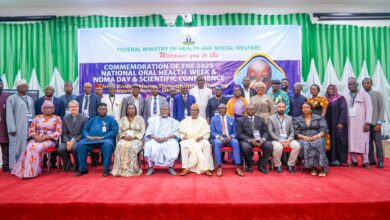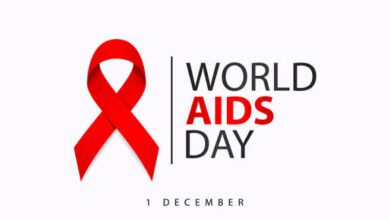110,000 Children, Adolescents Died From AIDs-related Causes In 2021-UNICEF

The United Nations Children’s Fund (UNICEF) has said, that around 110,000 children and adolescents between 0-19 years died from AIDs-related causes globally in 2021, while another 310,000 were newly infected, bringing the total number of young people living with HIV to 2.7 million.
UNICEF disclosed this in its latest global snapshot on children and HIV and AIDS ahead of this year’s World AIDS Day.
The Fund warned that progress in HIV prevention and treatment for children, adolescents, and pregnant women had nearly flatlined over the past three years, with many regions still not at pre-COVID-19 service coverage.
This development, it said, came on top of an existing and growing gap in treatment between children and adults.
Reacting to the report, UNICEF Associate Chief of HIV/AIDS, Anurita Bains while lending his voice to the call to bridge the treatment gap said, 300 children and adolescents lose their fight against AIDS on daily basis:
“Though children have long lagged behind adults in the AIDS response, the stagnation seen in the last three years is unprecedented, putting too many young lives at risk of sickness and death.
“Children are falling through the cracks because we are collectively failing to find and test them and get them on life-saving treatment. Every day that goes by without progress, over 300 children and adolescents lose their fight against AIDS,” Bains said.
According to the snapshot, children and adolescents comprised 17% of all AIDS-related deaths, and 21% of new HIV infections in 2021.
It informed that between 2014 and 2021, the number of new infections among children and adolescents aged 0 to 14 decreased globally by roughly 27%, but it rose by 13% in Nigeria.
In response to this, UNICEF warned that
ending AIDS in children and adolescents would continue to be a distant dream
unless the drivers of inequities were addressed.
The snapshot pointed out that new HIV infections among younger children (0-14 years) dropped by 52% from 2010 to 2021, and new infections among adolescents (15-19 years) also dropped by 40%. Similarly, coverage of lifelong antiretroviral treatment (ART) among pregnant women living with HIV increased from 46% to 81% in a single decade.
It also stated that the percentage of pregnant women with HIV who were receiving lifetime antiretroviral treatment (ART) grew slightly from 79% to 81% globally but declined from 57% to 34% in Nigeria.
Additionally, the snapshot showed that,
while the total number of children living with HIV was on the decline, the treatment gap between children and adults grew:
“In UNICEF HIV-priority countries, ART coverage for children stood at 56 per cent in 2020 but fell to 54 per cent in 2021. This decline is due to several factors including the COVID-19 pandemic and other global crises, which have increased marginalisation and poverty, but is also a reflection of waning political will and a flagging AIDS response in children. Globally, an even lower percentage of children living with HIV had access to treatment (52%), which has only marginally increased over the past few years.
“Meanwhile, coverage among all adults living with HIV (76%) was more than 20 percentage points higher than among children. The gap was even larger between children and pregnant women living with HIV (81%). Alarmingly, the percentage of children between the ages of 0-4 years living with HIV and not on ART has been rising over the past seven years, climbing to 72 per cent in 2021, as high as it was in 2012”, the report said.
On how to end the AIDS scourge, Bains said, “with renewed political commitment to reaching the most vulnerable, strategic partnership and resources to scale up programmes, we can end AIDS in children, adolescents and pregnant women”.






